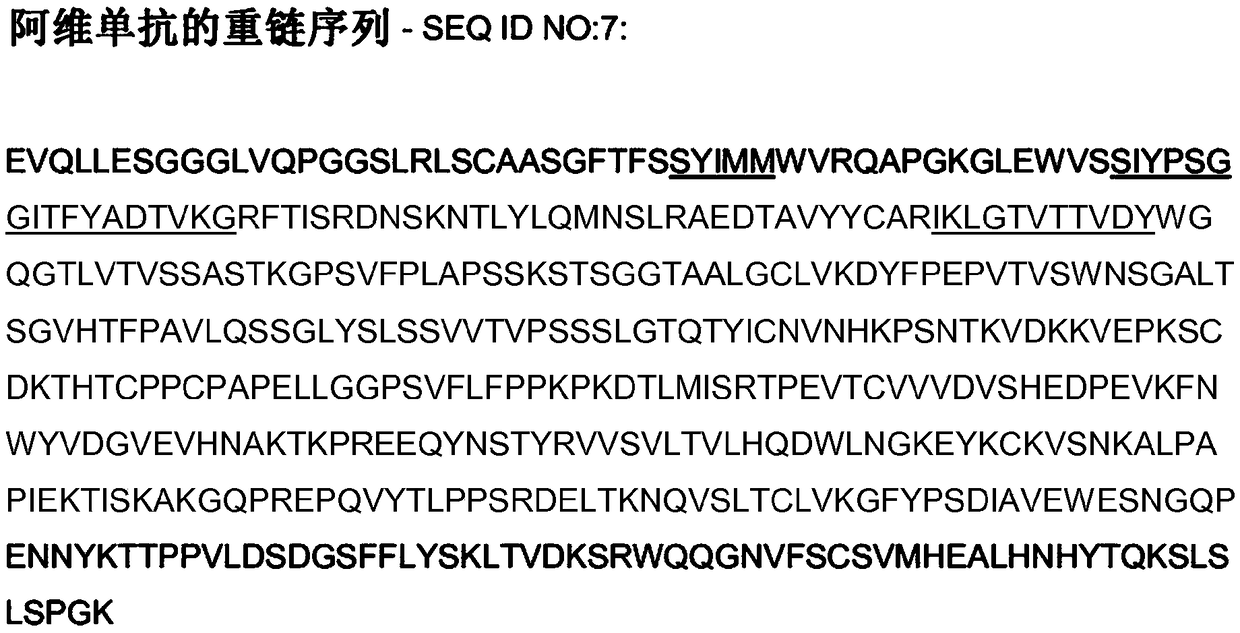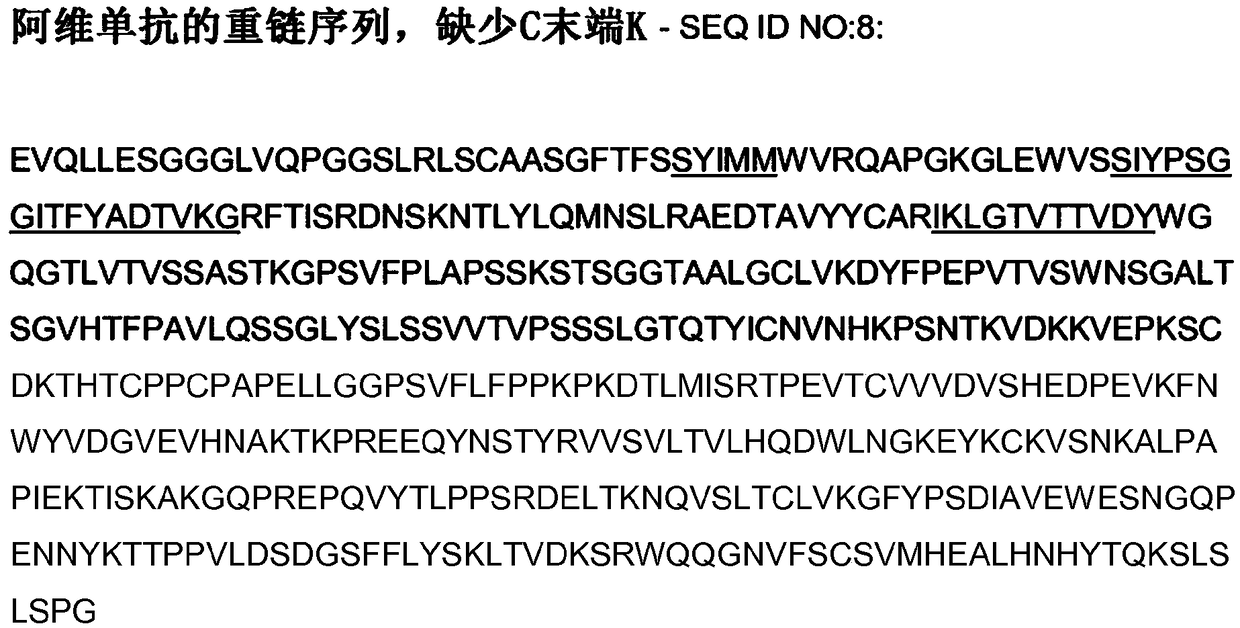Pd-1 / pd-l1 inhibitors for cancer treatment
A PD-L1, PD-1 technology, applied in the direction of medical preparations containing active ingredients, antibody medical ingredients, anti-animal/human immunoglobulin, etc., can solve the problem of death, long-lasting and complete response of aRCC patients is uncommon, patient resistance to
- Summary
- Abstract
- Description
- Claims
- Application Information
AI Technical Summary
Problems solved by technology
Method used
Image
Examples
Embodiment 1
[0178] This example is about an open-label, multicenter, three-arm phase III clinical trial testing avelumab in combination with and / or after platinum-based chemotherapy in patients with previously untreated ovarian cancer.
[0179] The primary objective was to demonstrate that the use of avelumab in combination with and / or after frontline chemotherapy was superior to chemotherapy alone by centrally reviewing progression-free survival (PFS). Inclusion criteria included newly diagnosed stage III-IV epithelial ovarian, fallopian tube, or primary peritoneal cancer after cytoreductive surgery or before neoadjuvant chemotherapy, regardless of PD-L1 status. The chemotherapy regimen allows the choice of weekly (80mg / m2) or Q3W (175mg / m2) paclitaxel and Q3W (once every two weeks) carboplatin. Approximately 951 eligible patients will be randomized to receive chemotherapy followed by observation; chemotherapy followed by avelumab; or a combination of chemotherapy and avelumab followed b...
Embodiment 2
[0181] This example is about a phase Ib clinical trial testing avelumab in patients with metastatic renal cell carcinoma.
[0182] Eligible patients had histologically demonstrated mRCC with a clear-cell component, measurable disease, archival / fresh tumor biopsy available, and an ECOG performance score of 0-1. Initial patients also required failure of 1 systemic therapy for mRCC. Patients received avelumab 10 mg / kg (1 hour intravenous infusion) Q2W until confirmed progression, unacceptable toxicity, or discontinuation. Tumors were assessed every 6 weeks by RECIST 1.1 and adverse events (AEs) were graded by NCI-CTCAE v4.0.
[0183] As of data cutoff, 19 patients had received avelumab for a median of 20 weeks (range 2-32) and had a follow-up of ≥13 weeks. The median age was 69 years (range 30-80), and 15 patients (78.9%) were male. The median time since metastatic diagnosis was 14.7 months, and patients with advanced disease received a median of 1 prior line of therapy (range...
Embodiment 3
[0186] This example relates to a phase I pharmacokinetic-pharmacodynamic study of avelumab in previously treated advanced classical Hodgkin's lymphoma.
[0187] The study is a Phase 1b dose-finding study designed to evaluate the pharmacokinetics, pharmacodynamics and preliminary antitumor activity of avelumab in adult patients with cHL. Patients recruited for the study were those who had failed first-line salvage chemotherapy regimens. Treatment groups will explore the factors of nominal dose, frequency of administration, and weight-based versus fixed doses. Of the imported data, a total of N=30 patients will be randomized (1:1) among the 5 treatment groups. Up to 3 treatment arms will be expanded in dose expansion, where N=36 additional patients will be randomized (1:1). Selection criteria for the dose-expansion cohort included: safety, achievement of >90% mean target occupancy (TO), and observation of objective responses confirmed by ≥3 per malignant lymphoma response crit...
PUM
| Property | Measurement | Unit |
|---|---|---|
| molecular weight | aaaaa | aaaaa |
Abstract
Description
Claims
Application Information
 Login to View More
Login to View More - R&D
- Intellectual Property
- Life Sciences
- Materials
- Tech Scout
- Unparalleled Data Quality
- Higher Quality Content
- 60% Fewer Hallucinations
Browse by: Latest US Patents, China's latest patents, Technical Efficacy Thesaurus, Application Domain, Technology Topic, Popular Technical Reports.
© 2025 PatSnap. All rights reserved.Legal|Privacy policy|Modern Slavery Act Transparency Statement|Sitemap|About US| Contact US: help@patsnap.com



